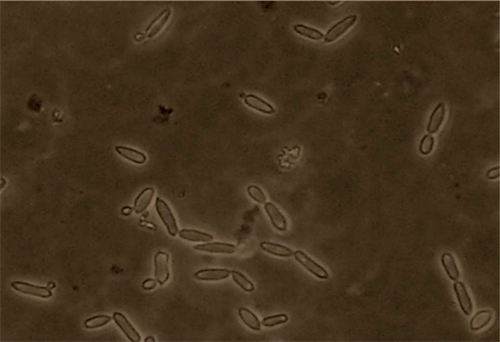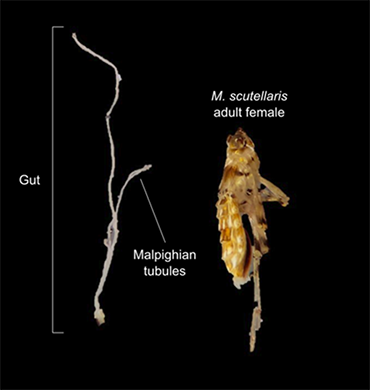FuEDEI and CONICET Begin to Examine the Role Water Hyacinth Planthopper Endosymbionts Play in Efficacy of the Planthopper as a Biological Control Agent
By Alejandro sosa1 and Tomas Righetti2
1FuEDEI (Foundation for the Study of Invasive Species), Hurlingham, Argentina
2CONICET (National Council for Science and Technology)
The water hyacinth planthopper, Megamelus scutellaris, is a natural enemy of this invasive aquatic plant that affects a great part of the freshwater courses in America and around the world. Water hyacinth causes extensive damage outside of its native range by blanketing large bodies of water, reducing the amount of sunlight that reaches submerged plants, altering the composition of aquatic communities, depleting the oxygen, and clogging water intakes and flood gates. The planthopper, specific to water hyacinth, feeds on the plant’s sap, weakening the plant and preventing explosive growth. However, the impact of the planthopper varies in different areas for reasons that are still not well understood. As most planthoppers, this species establishes obligated mutualistic associations with yeast-like symbionts (YLS) (Figure 1). These organisms, located in the abdominal fatty tissues, provide their host with essential nutrients and play key physiological roles. Moreover, many facultative fungal and bacterial symbionts located in the gut (Figure 2) have been demonstrated to aid digestion and provide nutrients, cause resistance to parasitoids or alter their host’s reproductive biology. A better understanding of a biological control agent’s microbiome could help to develop more efficient management strategies. To this end, we intend to:
- Identify and characterize scutellaris yeast-like symbionts by means of morphological and molecular analyses.
- Identify facultative bacterial and fungal symbionts that constitute scutellaris gut microbiome and analyze changes in the microbiome composition across different native and introduced populations.
 Figure 1. Yeast-like symbionts in the fatty tissues of M. scutellaris
Figure 1. Yeast-like symbionts in the fatty tissues of M. scutellaris

Figure 2. Photo of the digestive system of M. scutellaris.
Contact: Alejandro sosa
The Foundation for the Study of Invasive Species (FuEDEI), formerly known as the South American Biological Control Laboratory (SABCL), is located in Hurlingham, Argentina, near Buenos Aires. The SABCL/FuEDEI plays a crucial role collecting and providing candidate biological control agents for South American weeds and pest insects for federal and state cooperators, several U.S. universities, and research collaborators worldwide since 1962. FuEDEI’ s main mission includes exploring for natural enemies of target insects and weeds in Argentina and neighboring countries and conducting host-specificity testing to determine their safety for eventual release in the U.S. In addition, complementary research that investigates the ecology, behavior, taxonomy, and genetic differences based on geographic distribution is conducted on both targets and potential agents. Performing these studies in the region of origin of the target pest serves as an efficient prescreening process that reduces the number of biocontrol agent candidates shipped. This reduces the amount of quarantine work and valuable quarantine space occupation, the expenses related to permitting processes, the risks of escapes, and the release of maladapted or wrongly identified agents to a minimum, saving in costs and hazards. On some occasions these complementary studies help us understand why an exotic organism becomes invasive, which can, in turn, lead to determining novel strategies for their management.
